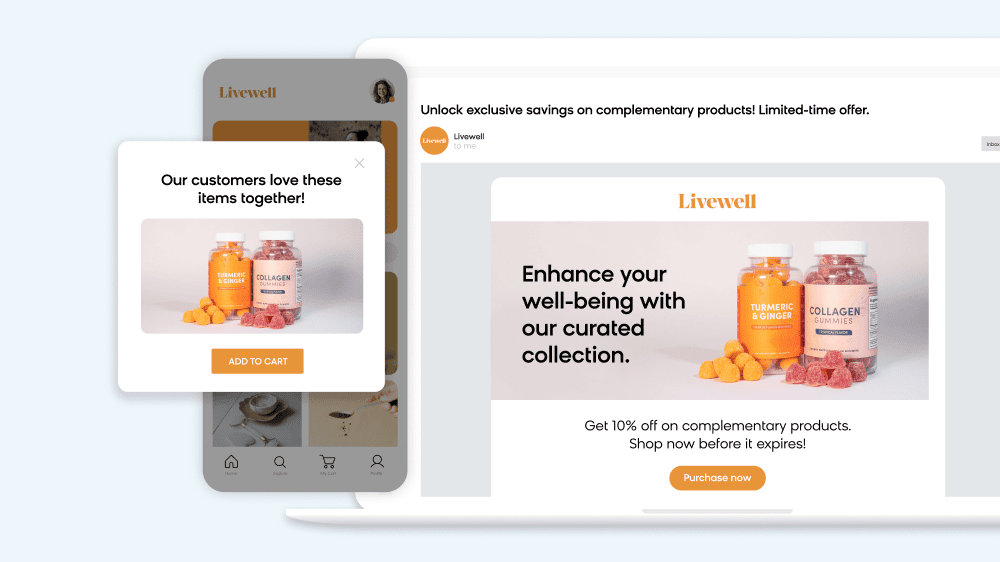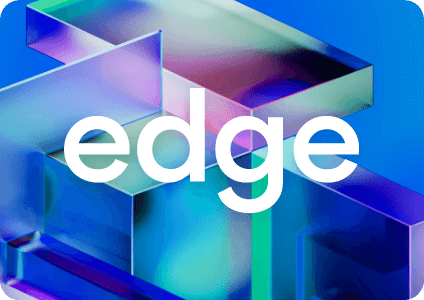Not all artificial intelligence (AI) solutions are created equal, and neither are business needs. For ecommerce brands, the real challenge isn’t just adopting AI but choosing the right kind. Do you go for a quick, prebuilt solution or invest in a highly tailored system designed to fit your every need?
Off-the-shelf AI is one option. With its speed, cost-effectiveness, and ready-to-deploy nature, it’s becoming a go-to option for businesses eager to address challenges without lengthy development timelines. But it’s not just about quick wins. Understanding where off-the-shelf AI excels and where it might fall short is key to making it work for your business.
In this blog, we’ll dive into what off-the-shelf AI is, why it’s gaining traction in ecommerce, and how it compares to custom-built solutions. We’ll also explore how finding the right balance between the two can help you unlock smarter, more scalable results. Let’s take a closer look.
What Are Off-the-Shelf AI Solutions?
Off-the-shelf AI is a practical way to bring advanced technology into your business without the complexity of building it from the ground up. These prebuilt solutions are created by third-party providers and are designed to address specific tasks right out of the box. With minimal customization required, they can be quickly deployed and integrated into your existing systems.
Unlike custom-built AI, which is tailored to meet unique business needs but takes time, resources, and significant investment, off-the-shelf AI is all about accessibility. It’s often a cost-effective choice for businesses looking to solve common challenges without a lengthy software development process.
The Benefits of Off-the-Shelf AI Solutions for Ecommerce Businesses
Off-the-shelf AI has become an appealing choice for many ecommerce brands and for good reason. Prebuilt AI software makes it easier than ever to integrate advanced technology and automation. Let’s explore some of the key benefits and why they might work for your business.
Lower Development Costs and Faster Implementation
Starting with an off-the-shelf AI solution significantly reduces upfront expenses and time compared to building a custom product (which can take months or even years). These tools are predesigned and ready to go, eliminating the need for a lengthy (and costly) development time with a team of data scientists. In fact, most solutions can be up and running within weeks. For businesses looking to manage their budget, this is a practical way to unlock AI’s potential without breaking the bank.
Reliable Performance for Common Needs
When it comes to standard use cases, off-the-shelf AI tools deliver high-quality results. For example, you can use AI to identify common patterns, analyze basic customer data, or perform image recognition. Their state-of-the-art algorithms are designed to handle generic data with precision, providing consistent and reliable outcomes.

Easier Maintenance and Accessibility
One of the biggest advantages of off-the-shelf AI is the hands-off management it offers. Maintenance, updates, and troubleshooting are typically handled by the vendor, freeing your team to focus on core business operations instead of managing technical issues.
Plus, these tools are often built with user-friendly interfaces, so you don’t need an in-house data science team to make off-the-shelf AI work for you.
Scalable Solutions
As your business grows, so can your AI. Many of these tools are designed with scalability in mind, meaning you can adjust their usage and capabilities as your needs evolve. This flexibility makes them a great fit for businesses that want to start small but think big, and make it easy to gain a competitive advantage.
The Limitations and Downsides of Choosing Off-the-Shelf AI
Off-the-shelf AI offers speed and simplicity but isn’t always the perfect solution for every business. These tools are designed for general use, which means they come with a few limitations that may not align with more specific or complex needs. Here’s what to keep in mind.
Limited Customization
Since prebuilt AI relies on generalized datasets and broad use cases, it may not adapt well to unique business workflows or niche situations. For instance, businesses with specialized data or unique requirements — like creating detailed customer profiles or handling complex inventory systems — might need to invest time augmenting the tool with additional data to get meaningful results.
Potential Integration Issues
Integrating off-the-shelf AI into your existing systems isn’t always seamless. These tools may require adjustments or additional steps to work alongside your current business processes, which can take up valuable time and resources. Compatibility issues can also limit how effectively the tool fits into your broader strategy.
Vendor Dependency
Using off-the-shelf AI often means relying on the vendor for updates, maintenance, and support. While this reduces the burden on your team, it also limits control. If the vendor shifts priorities, changes pricing, or retires features, your business might have to adapt — or start over with a new solution.
Costs Can Add Up Over Time
Although off-the-shelf AI is usually budget-friendly up front, expenses can grow with increased usage. Many platforms charge based on data volume or additional features, which can make these tools more expensive as your business scales. What starts as an affordable option may feel less so in the long run.
Effort Is Still Required
Even though these solutions are prebuilt, they aren’t entirely plug-and-play. You’ll likely need to validate their outputs, align them with your specific needs, and ensure they’re functioning as intended. This effort, while less than building custom AI, still demands time and attention.
How Would an Ecommerce Brand Use Off-the-Shelf AI?
Off-the-shelf AI is designed to jump right into action — no need for months of development or hefty investments. For ecommerce brands, these prebuilt tools provide quick, effective solutions to everyday problems, helping businesses run smarter with minimal effort. Here’s how they’re making an impact:
- Personalized product recommendations: Off-the-shelf AI uses algorithms to analyze shopping behavior and suggest products that match customer preferences, resulting in greater average order value and engagement.
- Fraud detection: Preventing fraud is critical for ecommerce businesses, and off-the-shelf AI can simplify this through pretrained algorithms that identify suspicious activity based on established patterns.
- Customer support: AI-powered chatbots and virtual assistants are transforming customer service. Trained with natural language processing capabilities, these tools use generative AI to handle everything from answering FAQs to processing returns. These chatbots are often plug-and-play, making them easy to deploy for your brand.
- Inventory management: Stocking the right products at the right time can make or break an ecommerce business. Off-the-shelf AI tools streamline inventory management by analyzing sales trends, seasonal patterns, and external factors like weather.
- Reducing abandoned carts: Cart abandonment is a universal pain point for ecommerce, and off-the-shelf AI tools tackle it head-on. These solutions analyze why customers leave — whether it’s pricing, shipping costs, or distractions — and deliver targeted follow-ups.

Finding the Balance Between Off-the-Shelf and Customized AI Solutions
Finding the right AI approach isn’t about choosing one over the other — it’s about understanding when each option makes sense. Let’s explore when off-the-shelf AI is the ideal starting point and when it might be time to consider customization.
When To Start With Off-the-Shelf AI Solutions
If time is of the essence, whether it’s to address a specific challenge or experiment with AI capabilities, off-the-shelf AI is a quick and low-risk way to get started. AI development can take months or even years to develop and can come with significant upfront investment, making them impractical when a solution is needed right away. For example, if a business wants to implement customer segmentation or automated support quickly, prebuilt tools can get the job done in a fraction of the time.
Additionally, sometimes businesses aren’t ready to go all-in on AI. Off-the-shelf solutions provide a low-risk way to test specific use cases and evaluate the impact of AI on business operations. For instance, deploying an AI chatbot to handle customer queries can provide immediate insights into how automation affects customer satisfaction.
When Customization Becomes a Necessity
Off-the-shelf AI is a great starting point, but there comes a time when businesses need more than generic solutions. As businesses scale, their needs become more intricate, and off-the-shelf AI may no longer keep up. Custom AI allows for seamless adaptation to evolving processes and larger workloads.
Custom AI also offers a big advantage by providing more control. With tailored solutions, you decide the features, functionality, and scope of your AI system. Need to add a new capability or update an existing one? You can do so on demand without relying on a vendor’s timeline.
This control and scalability can play a key role in your long-term strategy. Owning the software means you’re not restricted by a vendor’s roadmap, and you’re free to innovate and experiment to gain that competitive advantage. Take, for instance, a retailer wanting to implement hyper-specific product recommendations based on proprietary customer data. A tailored AI system could analyze nuances and predict behaviors in ways a generic tool wouldn’t be equipped to handle.

Ultimately, off-the-shelf AI is built for broad use cases, which means it doesn’t push boundaries or offer room for experimentation. Businesses with specific goals — like developing cutting-edge machine learning models or exploring innovative use cases — need custom AI solutions to bypass these limitations and stay ahead in a rapidly evolving tech landscape.
Bloomreach’s Balanced Approach to AI
For ecommerce businesses, making AI work for you shouldn’t feel like a compromise. You need tools that deliver results today while adapting to your evolving needs tomorrow. That’s where Bloomreach stands out, offering AI-powered solutions that balance the ease of off-the-shelf tools with the flexibility of customization.
For example, our Loomi Analytics feature makes generating reports intuitive and fast. Instead of navigating complex dashboards, marketers can simply ask a question, and the system will generate the relevant data based on your business needs.
Additionally, Bloomreach tools are designed to fit right into the systems you already use, like Shopify, Magento, or BigCommerce. This means you can start using AI to improve search relevance or personalize customer interactions without overhauling your tech stack. Plus, you can begin with preconfigured campaigns for email segmentation or cart recovery, then scale up to advanced workflows, predictive analytics, and cross-channel marketing as needed.
Choosing the Right AI Model and Strategy for Your Ecommerce Business
AI is a powerful tool, but its success depends on choosing the right approach. Off-the-shelf solutions provide quick, cost-effective results, making them ideal for addressing straightforward challenges or testing AI capabilities. However, their limitations — such as scalability and lack of customization — can become hurdles as your business grows. That’s where a hybrid approach shines.
Bloomreach offers the best of both worlds: AI tools that are ready to deploy and customizable as your needs evolve. Whether you’re enhancing search functionality, personalizing campaigns, or creating tailored customer experiences, Bloomreach ensures your AI strategy grows with you.
Ready to see how Bloomreach can help your business scale smarter? Request a demo today.













